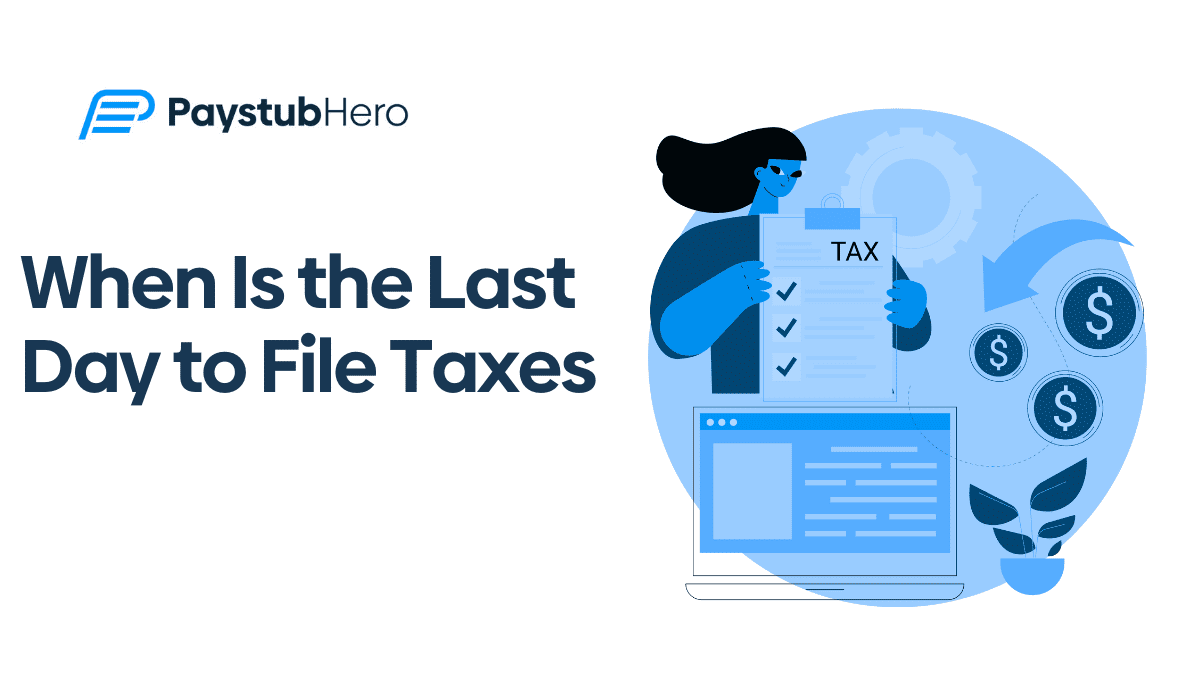The last day to file taxes in 2025 is Tuesday, April 15, 2025. If you need more time, you can file for an extension. This gives you until October 15, 2025, but you still need to pay any taxes owed by April 15 to avoid penalties.
What Happens If You Miss the Tax Deadline?
Life gets busy, and sometimes deadlines sneak up on us. One minute, you’re handling work, family, and daily responsibilities, and the next, you realize April 15 has come and gone.
In this scenario don’t panic. Here’s what happens and what you should do next.
If You Owe Taxes
The IRS will charge penalties and interest on any unpaid taxes. The late-filing penalty is typically 5% of the unpaid taxes per month, up to a maximum of 25%. That adds up quickly, so filing as soon as possible is in your best interest.
If your return is over 60 days late, the minimum penalty is either $485 or 100% of your unpaid taxes, whichever is lower.
But you can reduce the damage.
Even if you can’t pay everything at once, filing your return as soon as possible minimizes penalties. The IRS also offers payment plans, so if you’re struggling to pay, don’t ignore the problem.
Reach out and set up an arrangement.
If You’re Due a Refund
Now, here’s some good news. If you’re entitled to a tax refund, there’s no penalty for filing late. The IRS won’t charge you interest or fees, but you won’t get your refund until you file.
If you wait too long, you could lose the money altogether.
The IRS gives you three years from the original due date to claim your refund, so if you don’t file by then, your refund disappears, and the government keeps the cash.
So, if you’re owed money, why wait?
Filing an Extension
If you saw the deadline coming and knew you needed more time, hopefully, you filed for an extension. A tax extension, which you must request by April 15, gives you until October 15 to submit your return. But—and this is important—it only extends the deadline for filing, not for paying.
If you owe taxes, you’re still expected to estimate the amount and make a payment by April 15 to avoid interest and penalties.
How to File for an Extension
Filing for an extension is a simple process and can save you from unnecessary penalties if you need extra time to get your tax return together.
Here’s how it works:
➡ Use IRS Form 4868
This form is your official request for more time. It grants you an extension to file your taxes until October 15, 2025. You can find the form on the IRS website, and most tax software also provides an easy way to fill it out and submit it.
➡ Submit It by April 15
Even though you’re requesting an extension, you still need to send in Form 4868 by April 15, 2025. You can do this electronically through tax software, the IRS Free File system, or by mailing a paper form.
If you mail it, make sure to get proof of mailing so you have a record that it was sent on time.
➡ Pay Estimated Taxes If Needed
An extension gives you more time to file, not more time to pay. If you expect to owe taxes, it’s a good idea to estimate how much and submit a payment by April 15. This helps you avoid interest and penalties.
Even if you can’t pay the full amount, paying as much as possible will reduce additional charges.
➡ Get Confirmation
Once you submit your extension request, check that it was accepted. If you e-file, you should receive confirmation quickly. If you mail it, allow extra time and consider tracking it to ensure the IRS receives it.
➡ File by the Extended Deadline
An extension gives you until October 15, 2025, to complete and file your tax return. Just remember, the extra time is only for filing. If you owe taxes, you still need to pay what you can by April 15 to avoid extra fees.
Filing for an extension can be a lifesaver if you need more time to get everything in order.
Common Tax Deductions and Credits
Here are some of the most common ones:
Standard Deduction
Most taxpayers opt for the standard deduction because it simplifies the filing process and often provides the best tax break. In 2025, it’s expected to be around $14,600 for single filers and $29,200 for married couples filing jointly.
This deduction automatically lowers your taxable income without requiring you to itemize expenses.
Earned Income Tax Credit (EITC)
If you have low to moderate income, the Earned Income Tax Credit (EITC) can provide a significant refund, even if you don’t owe any taxes.
The amount depends on your income and the number of dependents you have, with some families receiving thousands of dollars back.
Child Tax Credit
Parents can benefit from the Child Tax Credit, which offers up to $2,000 per child under the age of 17. A portion of this credit is refundable, meaning you could receive money back even if you don’t owe taxes.
This credit is a great way to offset the costs of raising children.
Student Loan Interest Deduction
If you’re paying off student loans, you may be able to deduct up to $2,500 in interest paid over the year. This deduction helps reduce your taxable income, making it especially valuable for recent graduates.
Home Office Deduction
If you work from home, you may qualify for the home office deduction, which allows you to deduct expenses related to your home office. This includes a portion of your rent or mortgage, and other home-related costs.
However, your home office must be used exclusively for work to qualify.
Medical Expense Deduction
If your medical expenses exceed 7.5% of your adjusted gross income, you can deduct the portion that goes beyond this limit.
This includes out-of-pocket costs like doctor visits, prescriptions, and surgeries.
Retirement Contributions Deduction
Contributions to retirement accounts like a 401(k) or traditional IRA can lower your taxable income. For 2025, you can contribute up to $7,000 to an IRA (or $8,000 if you’re 50 or older) and up to $23,000 to a 401(k).
These contributions reduce your taxable income while helping you save for the future.
Important Documents for Filing in 2025
Being prepared with the right documents makes tax filing easier and helps ensure accuracy. Here are the key documents you should gather before filing:
➼ W-2 Form
If you’re employed, your employer will provide a W-2 form that shows your total earnings and the taxes withheld throughout the year. You’ll need this to complete your return accurately.
➼ 1099 Forms
If you’re self-employed, do freelance work, or earn income from side gigs, you may receive 1099 forms reporting your earnings. These include 1099-NEC (for non-employee compensation) and 1099-MISC (for other types of income).
➼ Proof of Deductible Expenses
If you plan to claim deductions, gather receipts and statements for medical expenses, charitable donations, business expenses, and education costs.
These can lower your taxable income and help maximize your refund.
Where to Get These Professional Documents
At PaystubHero, we provide accurate documents such as paystubs, W-2 forms, and 1099 forms that help in verifying your income, supporting tax deductions, and streamlining your financial processes.
Whether you’re self-employed, a contractor, or a full-time employee, our services ensure you have the right paperwork to meet your needs.
FAQs
Here are the most common questions about the last day to file taxes:
No, the official deadline for filing taxes is April 15, unless it falls on a weekend or holiday, in which case the deadline is typically extended to the next business day. For 2024 taxes, the deadline is April 15, 2025.
You must file your taxes by midnight on the deadline date, typically April 15. If you’re filing electronically, the IRS accepts e-filing submissions until 11:59 PM on the deadline.
You can file your taxes late, but if you miss the deadline, you may face penalties and interest. You can request an extension to file until October 15, but any taxes owed are still due by the original deadline to avoid late payment penalties.
Yes, you can still file taxes after April 18th, but if you miss the deadline without an extension, you may face penalties and interest on any unpaid taxes.





